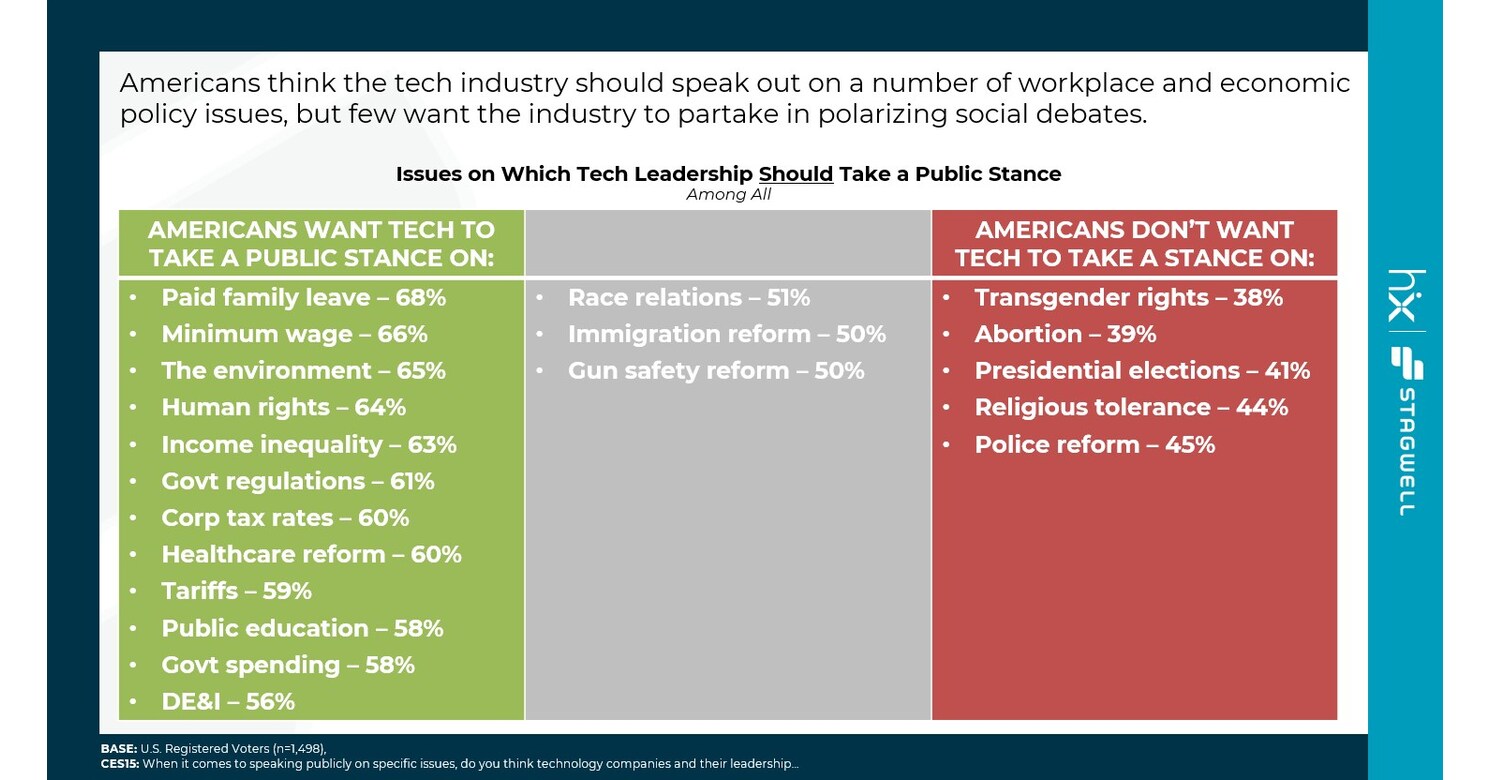


Recent findings indicate that generative AI is being rapidly adopted across the United States, with 32% of adults aged 18 to 64 reporting usage at least once in the week prior to August 2024. This includes 24% of employed respondents who utilized generative AI at work, and nearly 11% who engaged with it daily. The technology is primarily being used for tasks such as writing and information analysis, reflecting its versatility in various applications [44329ad1].
A recent poll conducted by Stagwell and HarrisX from January 3-6, 2025, reveals that 81% of Americans view the tech industry favorably, and 79% believe it has a positive economic impact. Furthermore, 57% expect the tech sector to be a major economic driver in the next five years, indicating strong public support for technological advancements [2be9f41b].
In a related survey by YouGov conducted from November 27 to December 3, 2024, it was found that 90% of Americans know at least a little about AI, with 12% claiming to know a great deal. Notably, 59% of Americans reported using AI tools, an increase from 51% in March 2024. However, public sentiment is mixed: while 35% believe AI's effects will be positive, 34% view them negatively, and 36% express concern that AI could end humanity [03cebea9].
The YouGov survey also highlighted that 28% of employed Americans worry about job loss due to AI, and 53% feel cautious about its implications. Additionally, 58% of respondents expressed distrust in AI's ethical decision-making, and 34% advocated for much more regulation of AI [03cebea9].
The Stagwell and HarrisX survey also highlights concerns about job displacement, with 60% of respondents believing that AI will replace more jobs than it creates. Despite these worries, 67% want tech companies to collaborate with the incoming Trump administration, and 58% believe that Trump's presidency will benefit the tech industry [2be9f41b].
The findings from economists Alexander Bick, Adam Blandin, and David Deming further emphasize the significant shift in perception regarding AI. Deming, who was initially skeptical about generative AI, has become optimistic after analyzing the data. He estimates that if productivity increases by 25% due to AI, it could enhance overall labor productivity by between 0.2% to 2.1% [44329ad1]. This rapid adoption rate is noteworthy, as it is reportedly faster than that of personal computers and the internet, suggesting a swift integration into daily life [44329ad1].
In a related development, AI investments are increasingly driving U.S. economic growth. Firms are pledging billions for AI infrastructure, with capital spending on AI technology significantly impacting GDP growth. Notably, AI-related investments accounted for 16% to 20% of GDP growth in the third quarter of 2024 [665aecef]. Sam Altman, CEO of OpenAI, claims that AI could transform productivity, although there are concerns about a potential investment bubble reminiscent of the dot-com era [665aecef].
President-elect Donald Trump recently announced a $20 billion data center deal, while Amazon plans to invest $11 billion in AI in Georgia. Microsoft is set to spend $80 billion on AI data centers, and Softbank has announced a staggering $100 billion in AI spending [665aecef]. The so-called Magnificent Seven tech firms saw an average stock gain of 63% in 2024, reflecting the bullish sentiment surrounding AI investments [665aecef].
However, a contrasting study by the Census Bureau found that only 5% of businesses reported using AI, indicating a notable gap between personal and workplace usage. This discrepancy raises questions about the potential for AI to transform productivity in professional settings [44329ad1].
Deming further estimates that AI could enhance labor productivity by between 0.125 to 0.875 percentage points, which, while modest, could contribute significantly to GDP growth over time. Fellow economist Daron Acemoglu has expressed concerns about the need to differentiate between productive uses of AI and more frivolous applications. Both economists agree on the potential for modest productivity gains, emphasizing that even small improvements can have a meaningful impact on the economy [44329ad1].
In the context of enterprises, a recent analysis by Cognizant and Oxford Economics found that 77% of global companies are eager to grow revenues through AI, with an average planned investment of nearly $50 million for this year. However, only 26% have implemented cross-enterprise AI use cases, indicating that while enthusiasm exists, there are still barriers to widespread integration [44329ad1].
Moreover, 70% of companies feel they are lagging in AI adoption, which they recognize could place them at a competitive disadvantage. To address this, 54% plan to upskill their workforce to better leverage AI technologies [44329ad1]. The construction industry is notably benefiting from AI investments, with a 43.1% increase in spending, and the utilities sector is experiencing job growth at a 20-year high [665aecef].
As companies navigate these challenges, the overall sentiment remains one of cautious optimism. The integration of AI into both personal and professional spheres presents a unique opportunity for economic growth, provided that businesses can effectively harness its potential while addressing the accompanying challenges [44329ad1].